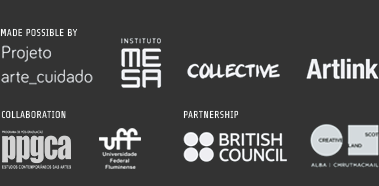
Shona MacNaughton [left] Progressive, performance, Glasgow, 2017. Photo: Rachel Adams.
Millenia Lízia [right] Empregada para um cubo branco [Maid for a White Cube] Series áreadeserviço [Service Area series], performance, 2014. Photo: Rebeca Campagnoli
Is it possible to be a healthy dissident artist? : Dialogues between Millena Lízia and Shona Macnaughton
1st email December 18th, 2017: Shona Macnaughton
Hello Millena!
Okay so initial email…I thought I would introduce the work of mine that was the most relevant to yours from what I remember.
The theme under which I was presenting my work in Rio was within the domestic as political which was appropriate because I usually start a piece of work from reflecting upon a personal situation, a place and situation in which I find myself. Or how my self, my identity/role as an artist relates to an invitation to a site, it is always responsive to the particularities of a site. So therefore I have often made (art)work in domestic or “real” spaces. There is definitely a feminist perspective to this as the roles I reflect on are stereotypically female. Cleaners, waitresses, mothers, schoolgirls, maids, 3D digital models have all been roles which I have taken on in video and live performance. Loosely I’m influenced by what has been termed “affective labor” –serving roles, caring roles, roles that use female sexuality, the performance of care under neoliberal capitalism.
The following work was the one I thought was most relevant to your work Faço Faxina [I do housework] where you offered your services as a maid.
Shona Macnaughton. Adverts from the workplace = 48p, 2010.
This was a video work made from documentation of a series of performances I made, whilst employed as a cleaner in holiday apartments in the city of Edinburgh. These were uninvited, performances made whilst I was being paid to clean the rooms. I was given access to these spaces as part of my job to clean them. In the video they appear to be personal spaces, my own personal spaces. My method is to play with ownership of the spaces. I could only film in very short periods of time as at any moment my boss could enter the frame and break the illusion.
My aim was to challenge those conditions of employment, regain agency in the situation. Making those conditions visible through the form of the video, the tension and action in the video comes directly from the conditions of time, precarious labor, and capital relations. On a basic, practical level the work was a way for me to continue to make artwork whilst having to spend my time cleaning. And on a theoretical level it was made as a way to make visible the hidden labor that goes into the tourist industry in a heritage city. The video was structured directly by conditions of labor. The video is titled by the calculation of its length and what my pay would be for that time.
In the trajectory of my work since then – that was 2010 – the parallel states of working as an artist and working for money have been an ongoing productive conflict for me. This real life frustration prompts me to reflect on wider questions of the subjugation of body within employment, artistic value, and the performance of labor within labor.
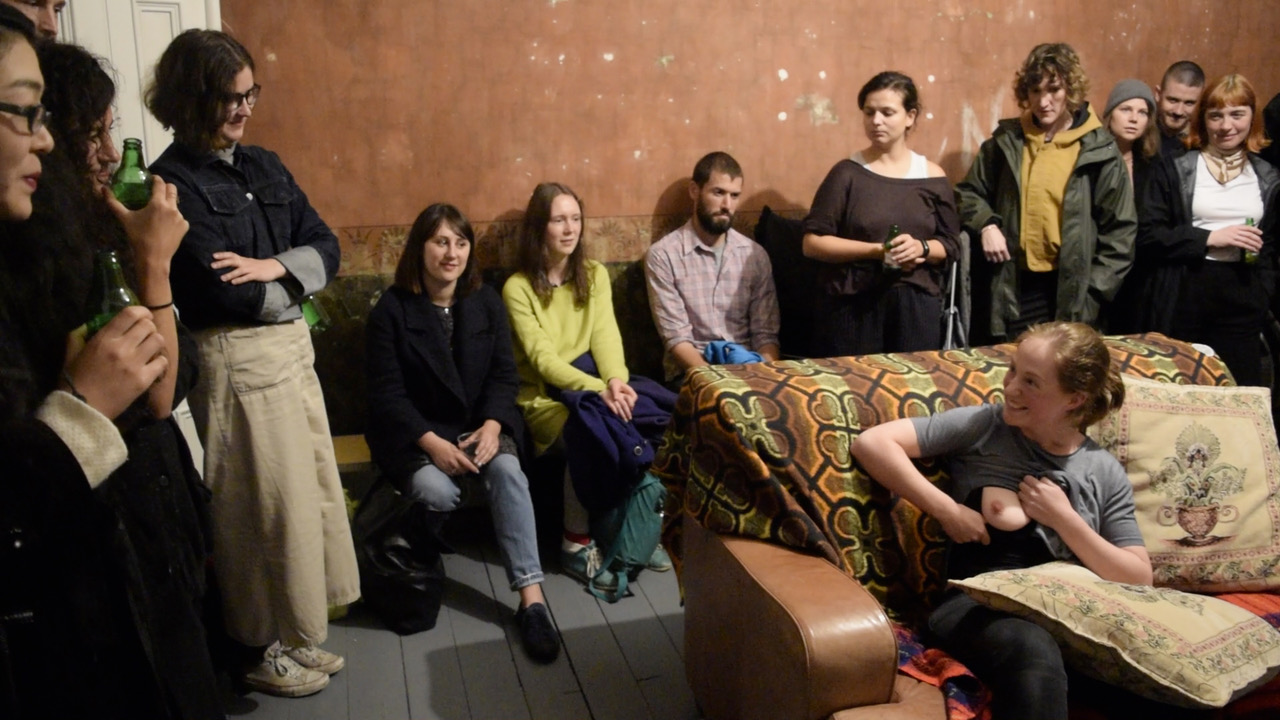
Fig 1. Shona Macnaughton. Performance. Arms Length Government Body, 2016. Photo: David Excoffie. Commissioned by and performed at Celine Gallery, Glasgow. Using only myself as performer I enact the ritual of a bedtime routine for a child, but directed towards an audience of adults. I replace the words used for caring and disciplining a child with the art language used to promote art spaces, institutions and museums. These words are spoken in tones you would use when addressing one’s own child.
There is another layer to this in that several of the kind of places I have worked are historic buildings in Edinburgh, built in the neo-classical style to reflect the Enlightenment ideals of the free market, scientific objectivity, rationality, and the universal subject position (which of course was driven by and can only be embodied by the white male). Collective [the supporting Scottish art organization partner on the exchange between Brazil and Scotland and the magazine project] are now moving into a building and site typical of the neo-classical enlightenment style. So within my commission I will be thinking about how, when an institution is taking on custodianship of this history, it can deal with caring for the un-privileged body?
What I think is the key difference when I am dealing with these subjects or what I could term as “white washed” is the absence of the question of race, my subjectivity as a white person, and the relative privilege that gives me. When I use my body within a work it is a different thing, I can play a role, perhaps even a position I have found myself in such as working as a cleaner, but I am not perceived as such when I am out of that job. I am thinking here about the thing you said about women of color being perceived as a maid by default in Rio/Brazil, being asked about cleaning products when inside a shop. Maybe this is a starting point for discussion? Bringing out differences/similarities in contexts Brazil/ Scotland and use of our bodies?
2nd email January 5th, 2018: Millena Lízia
Olá Shona! May you and your baby have a 2018 full of much love, health, wisdom, and welcoming social networks.
Many thanks for sending your work here. As I wrote to you via messenger, I was so pleased to be in touch. But I need to tell you that somehow it makes me a little anxious to have to organize a conversation here about / with my work. My aesthetic propositions end up being very connected with the flow of life and, oftentimes, this pause to organize the chaos (inherent to life itself and to the works) causes me some affliction. But it seems to me that this is more often than not the case and I should be accustomed to it by now… (laughs) It seems to me that this act (of organizing the flow of life) runs the risk of us falling into a possible trap that makes us navigate a single narrative for our projects, so I would like to draw attention to the partialness of this narrative that I am outlining here. I myself live by projecting various perceptions into the things I’ve done, and the narratives of this moment are related to the choices of how to tell a story, the particularities of records, archival material, and the words we choose. Paths can be many and tortuous at times. Good, but it’s a big challenge. And this is also the challenge that I have been facing in the writing of my masters dissertation of the postgraduate program of which I am a part.
I remember well your presentation in Rio and noticing points of proximity and distance in our research and between our strategies that operate within the dynamics of daily life, drawing on our experiences of the world. I remember both your works Arms Length Government Body and Adverts from the workplace = 48p, 2010, the latter being the one that, yes, is closest to the proposition of Faço Faxina [I Do Housework] 2016. And wow!! I found the composition of your recent work Progressive, 2017 really potent!!! In some way it reminds me of the discussion around the place of the nonhuman that comprises the propositions of some of the thinkers addressing decolonialism with a feminist perspective, such as Maria Lugones and Yuderkys Espinosa.1 Perhaps my propositions Quitute [T.N. word of Afro-Brasilian origins meaning both delicacy and indigestion] 2014 and especially, Empregada para um cubo branco [Maid for a White Cube] 2014 get close to this take on the place of the nonhuman (how strategies of domination occur) and how we think about modernity / colonialism’s technologies of power and their fold of coloniality. Terms still in use attributed to domestic workers in Brazil – such as “Criada [creature/maid]” and “doméstica” [domestic servant] are signs of this relationship of the production of bestial bodies. Ah, would that “housework” be the cleaning process. Well, it seems fundamental that we bring analyses of interdependence to these histories, our histories, our territories, our bodies.
Cesaire, already in the 1950s, wrote in Discourse on Colonialism the following about the proletariat and the colonial process, both constituents of the history of capitalism: “The truth is that so-called ‘European’ civilization, ‘Western’ civilization […] is incapable of solving the two major problems to which its existence gave rise: the problem of the proletariat and the colonial problem.”2 And if one looks at decolonial studies, one of its most powerful denunciations is in exposing how much racial schemas were strategic with respect to the division of work on the global stage. Even the monetary remuneration of the European proletariat was only possible thanks to the forced labor of the colonies. And so, I have come to see this global understanding of the division of labor, from the perspective of the production of racialities as a structuring schema for biopolitical organization, as fundamental. And when it comes to the question of domestic work here, not only does the racial schema apply, it also intersects with issues of gender. For a long time domestic service was one of the few possibilities for regular insertion into the labor market for black women, who, in post-abolition, because of the regular demand for their services – unlike black men – were those who supported their family nucleus and communities. These women were our great-grandparents, grandmothers, aunts, mothers … And to this day in Brazil it‘s us, black women, who are the majority doing this type of work, which can be understood as an inheritance from the days of slavery, but which is now carried out in modern apartments. This does not mean that as a black woman you are necessarily a maid. But this is the stereotyped discourse that falls on our bodies, on all black women.
The series of works that I call áreadeserviço [Service Area] that includes Quitute, Empregada para um cubo branco and Faço faxina is related to the experience of having lived in a maid’s room [T.N “quarto de empregada” or “maid’s room” is a common feature of middle to upper middle class Brazilian homes]. Subletting this tiny room in a middle class apartment in the city of Rio was all I could afford given its high real estate prices and I found that when it came to sharing the demands of the domestic care of the apartment, it fell on me, obviously due to the ease of which Brazilian middle class subjects have of being served and cared for – especially by black women.
I remember that when we talked at the Centro Municipal de Arte Hélio Oiticica [Hélio Oiticica Municipal Art Center], which was the day of my presentation, we talked about self-determination, and about how this theme is applied in identity discourses. In the black feminist literature on which I draw, self-determination can be understood as the right of self-declaration, the right to speak who you are. After we talked I became more aware of how this term is used here. One way or another, I thought that it should be from this point of view that I would share with you the works of the áreadeserviço series, from the point of view of identity and the need, throughout the series, to decentralize the issue of image production within performative programs in order to construct voice, conversational dynamics that move in-between encounter and confrontation.
To some extent, for the work of the Faço Faxina, I have been wanting to defend the proposal of this aesthetic construction as an epidermal program, that is thinking about the epidermal structure in which racialities are constructed and how powers are distributed. It is also about thinking of an epidermal program as one of concomitant zones of negotiation, contact, injury, wound, contagion, healing, resistance, protection, elasticity, experience, and sensibility.
In someway, as part of this, I have been interested in thinking about performative games as everyday productions that produce our existence and resistance, ones that would be in tension between the discourses produced on our bodies and those that we produce about ourselves, implying self-declaration. For this I find it interesting to also present alongside the works of áreadeserviço series, another series of the experiments that I call Desperfilar (Dissipation), which contemplates web 2.0 platforms and their performative-narrative games.
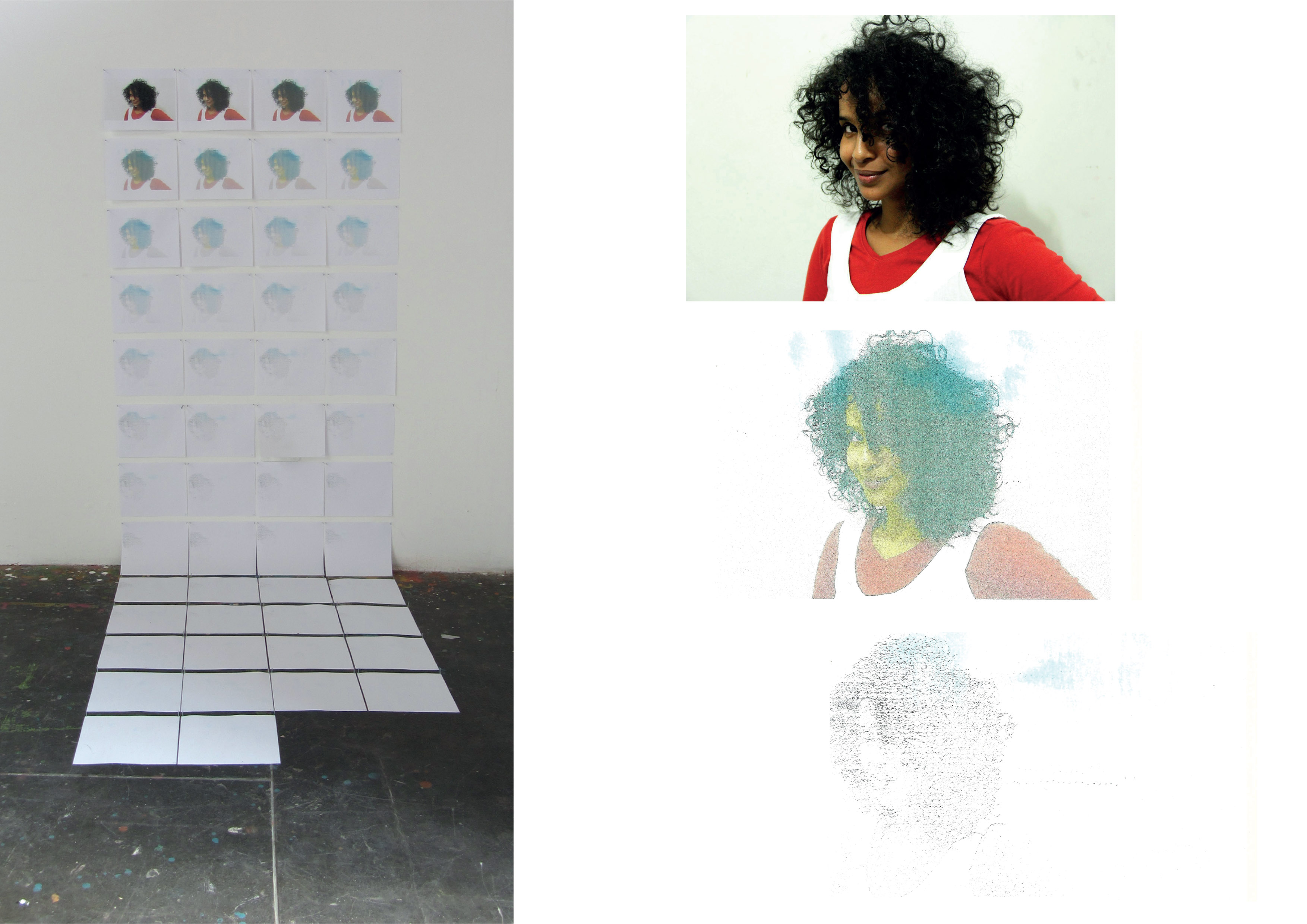
Fig 6. Millena Lizia. Desperfilar, Study 1. Digital prints based on a progressive disappearnce of a self-portrait leaving no trace of the original image. 2014. Foto: Millena Lizia.
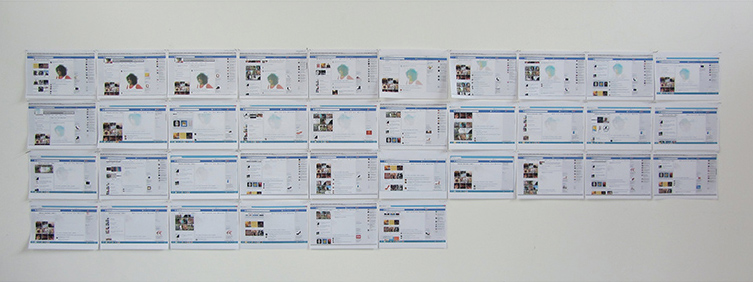
Fig 7. Millena Lizia. Desperfilar, Study 2. Sequence of fade-out digital screenshots using my Facebook photo profile published in my Timeline over 50 consecutive days from June 2nd to July 21st, 2014 . It is the same image as Study 1 presented together with friends posts and reactions to the Project.
These processes, as much in Desperfliar as áreadeserviço, coincide with one another. It is important to me to point to how the works of áreadeserviço, above all, are construed as a criticism of the institution. Based on my research there is no black artist represented by galleries here in Rio de Janeiro, the city of the largest slave port in the history of modernity / colonialism, known as Cais do Valongo [Valongo Wharf], in the largest black country outside of Africa. The presence and production of absence seems to be one of the tonics of my work.
P.S. : I’ve been reading about a museum in Liverpool, the International Museum of Slavery, that interested me a lot in that it stresses the structural role of the colonial industry as central to the process of the Industrial Revolution. Do you know it?
Well, my dear, there was a moment when I tried to organize documentation of my work here in the body of the email, but I thought it was confusing. So I ended up creating two PDF documents (and they’re a bit long – sorry!) One for each series: Desperfilar and áreadeserviço. As I work a lot with archives it seemed to me that organizing things in this way would make the construction behind each process more accessible. When I finished putting together the documents – also the reason for my delay in getting back – I was left with the feeling that we both have material for an endless conversation!
A big kiss for you and your baby girl!!!
3rd Email: 22nd January 2018: Shona Macnaughton
Dear Millena
It is great to see your work again, a lot to process but I’ll choose to focus on a few things. I’m hoping Google translate is not too far from the truth…
I am currently caught in an abundance of life, my daughter was born 3 weeks ago (thank you for your beijo grande!) so my apologies for the lateness of my response.
The “flow of life” as you describe it and the difficulty of forcing a narrative onto it, is something I struggle with every time I have to write an artist statement. It can sound as though frames of reference or concerns, when seen thematically i.e. the domestic, are so wide ranging that I am simultaneously over ambitious for the work but also tediously stuck to the subjective mode. The named theme or description doesn’t do justice to the work. They are a response to certain situations in particular contexts, how do we summarize such work?
I like the way you have categorized your work and the development of the áreadeserviço body of work towards the conclusion of the selling of services via Facebook is really interesting, do you plan on making any more in that series? I suppose the main difference in the way we have dealt with the labor of cleaning is your focus on the identity of the body doing the labor and its territories. At the time of making the work Adverts for the Workplace, for example, my focus was on the economic, not on my gender (although in retrospect this is inherent). The idea of art made at work or as labor itself within or outside the white cube is in both our works, it is striking how similar these strategies can be in such different contexts. The value system of the art market and the power relations of its spaces seem to be a shared concern and a global one. We also share I think performance strategies of a confrontational nature. I’m interested to know if you view your relationship to audience in this way, as confrontational? Or is it intended as more inclusive? And is there a divide in participation in terms of race? For example in the work Faço Faxina what is an ancestral contract as opposed to a service contract?
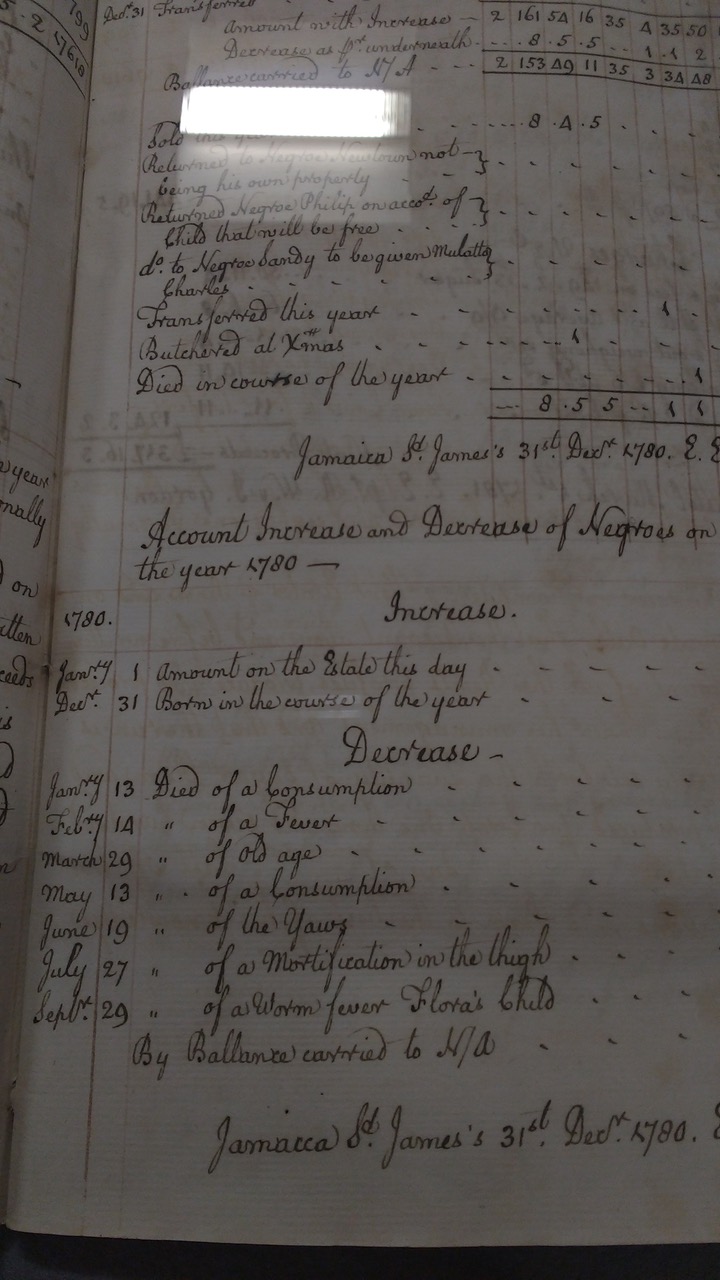
Fig 8. Exhibition Glasgow’s Slavery Past, Mitchell Library, Glasgow. October 2017. Photo: Shona Macnaughton
I don’t know the museum in Liverpool you mention, looking at their website it seems, as with many exhibitions focusing on slavery with narratives that focus on the positive, the goodness of the abolitionists, and the retelling of the erased history of people of color, which is of course important, ignore what you describe as the unacknowledged labor producing the products which gave us in western Europe wealth, and by extension stable economies which could provide a welfare state. Ignoring the fundamental contention that our way of life here would not be possible historically and without continued exploitation along an epidermal division. As an aside, The British Council with whom we as a group were funded to travel, is itself a soft power, a colonial remnant. Established to spread liberal democratic ideology of the British state, through language, through culture.
I’m glad you brought up the issue of self determination, which was/is a gap in my knowledge and thinking, in fact it is what I have now based my forthcoming text work for Collective. This was a very important complication for me. Now I understand how this discourse has been co-opted by mainstream neoliberal rhetoric. Self-care- state-care- art-care. The work for Collective will be based on the disjunction between the original meaning and context of self-care within black feminism and it’s neoliberal manifestation which literalizes its meaning [and] is aimed at privileged white people and erases the self declaration aspect. Without giving voice as an aim it is sanitized, without a capacity for friction it is engaged instead in creating smooth bodies. I am wondering how this idea can be rescued from a free market ideology that places responsibility for ill-health on the individual and away from social and material conditions.
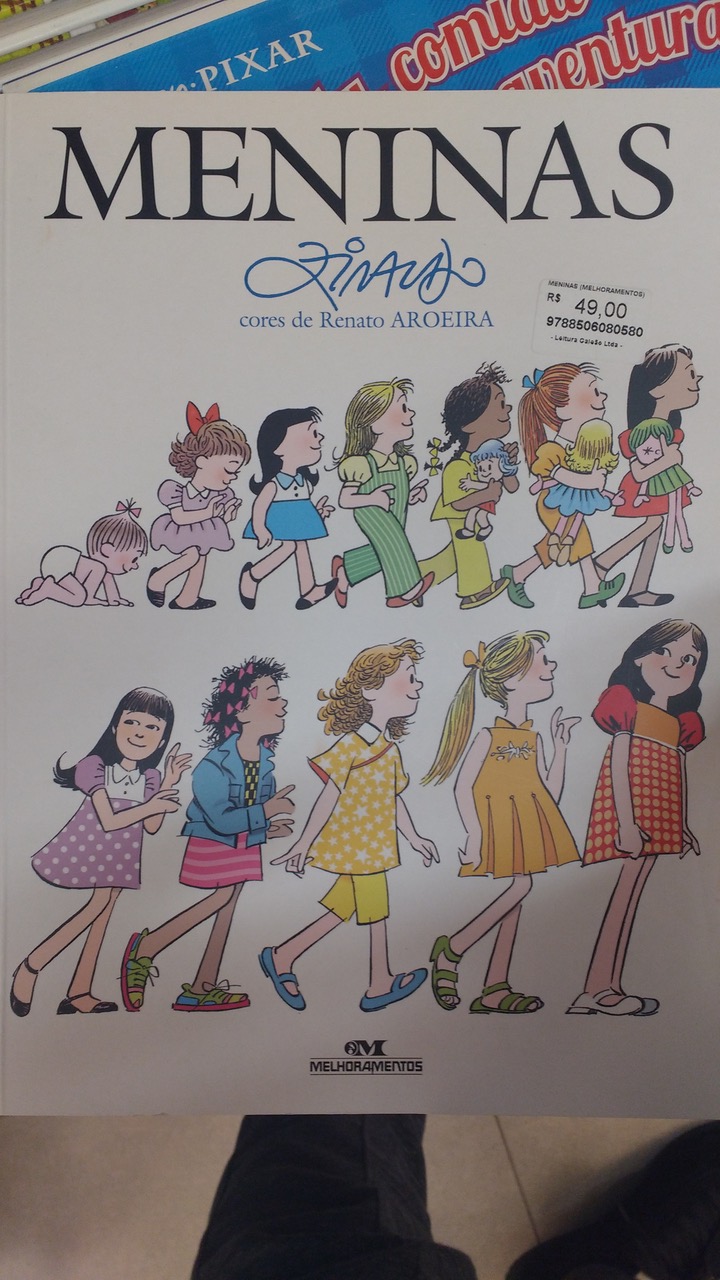
Fig 9. Rio de Janeiro airport bookshop, October 6th, 2017. Photo: Shona Macnaughton
And returning to the “flow of life,” since being a pregnant woman and then giving birth I have been subject to all sorts of public health intervention, which has been accompanied with an inundation of public health literature. The heaviness of the state is suddenly felt when you reproduce. I am interested in the kind of address that the state public care uses, simultaneously enacting heavy control but towards the end of creating a self-caring, productive subject. So the non-human, yes Bestial tendencies, when I was feeling most bodily, wearing animal prints on the site of a former agricultural livestock market seemed appropriate! In fact the experience of being pregnant in Brazil where my femaleness felt heightened, influenced the Progressive performance. This was very different to the UK, where people are more reserved, less inclined to acknowledge a pregnant body, certainly less reverence to the idea of mother. Somehow this made me feel uncomfortably conspicuous, unable to fool myself into an escape from gender or my own role as a mother, the fallacy of thinking of myself as perceived as neutral “artist”…The inability to escape my identity or what my life beyond being an artist was, was the most stark at the time of this performance, or maybe I’m just becoming more aware…
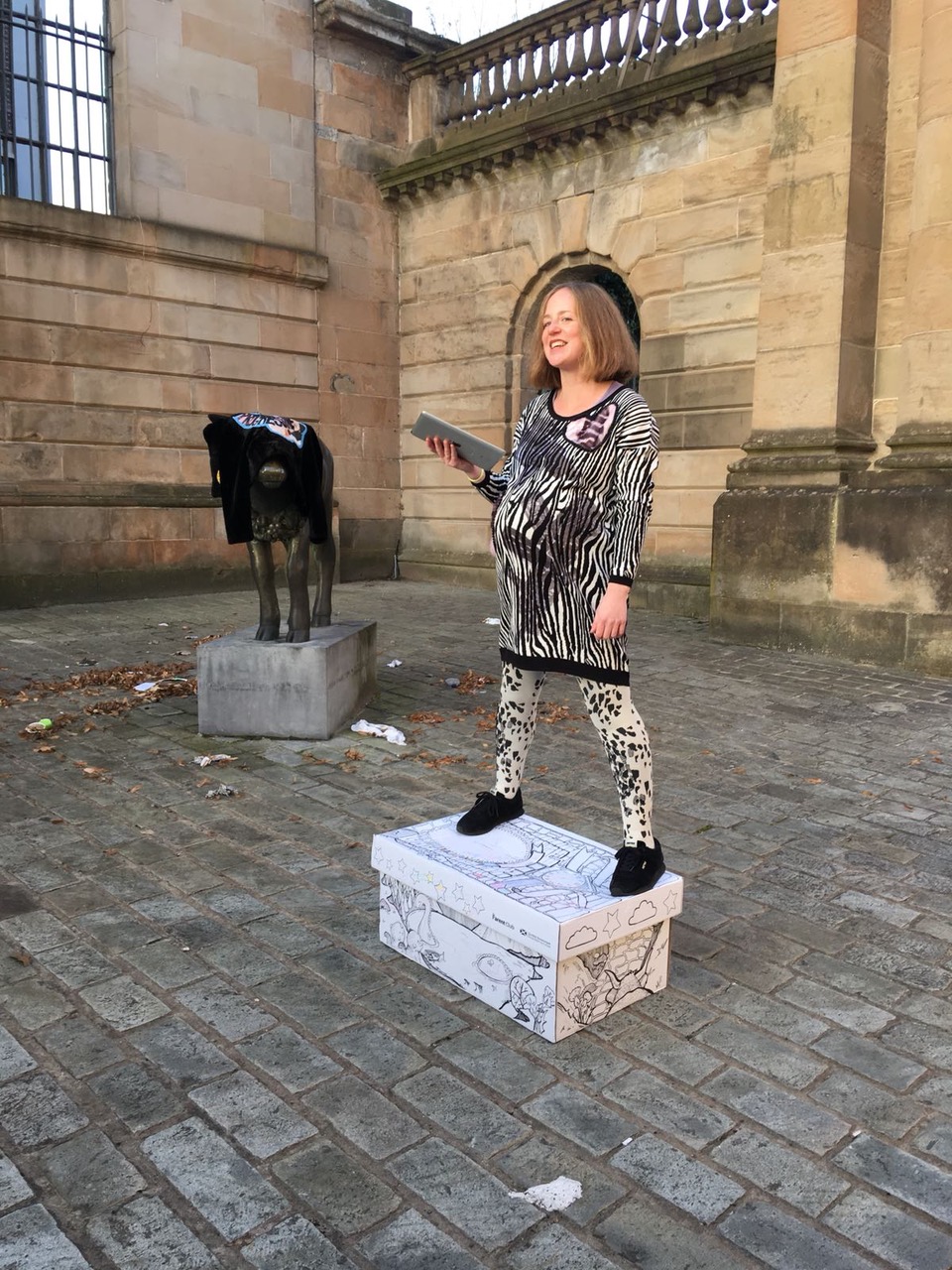
Fig 10. Progressive, performance, Glasgow, 2017. Photo: Rachel Adams. A public speech at the site of the old Meat Market abattoir and of agricultural labor exchanges, now turned into “luxury” apartments, using language from gentrification projects from the area but translated into the first person to reflect my pregnant body. The podium on which I am standing is the Scottish government issued ‘Baby box’, a starter pack for all babies born in Scotland.
Shona x
4th email: March 1st: Millena Lízia
Shona, my dear! Wow!! I need to tell you that since you sent your email, I have read it many times. It raises many issues, so it meant that I could not respond quickly. And that maybe I needed more time to think about the conversation strategies we’ve been touching on here, drawing on recent affecting experiences. Well, anyway, I apologize for the delay in answering. The delay was also due to the intensification of the writing process of my masters’ thesis, stimulated, among other things, by the end of my research grant. So I have been trying to do my best to resolve this, which is still in progress. The subject of money, of resources, structures much of the aesthetic production of the artists whose bodies are dissidents, which has been what I have been experiencing and living.
One of the research exercises for Faço faxina was precisely to meet those clients with whom I could create a zone of identification, of recognition. In these meetings the theme of work / money always had a strong presence. The áreadeserviço series itself is directly related to how to reduce labor production costs, since resources were / are scarce. The answer to this was to centralize the propositions in the body, mostly because of the lack of choices and the urgency to continue producing-thinking in diverse artistic platforms. The body, although fractured, is configured as a fundamental support – and how fragile and powerful that support is. I do not want to set up an altar here in praise of scarcity, on the contrary. This factor limits our production and our health. Is it possible to be a healthy dissident artist? Nonetheless, I wanted to bring up this theme of financial resources, because it was something that came up in our exchanges in Rio and is something that you point to as central in your work. In fact, I think it is important to point out that this theme i.e. economic structure is central to my production as well, because I deliberately create friction at the intersections of social power distribution and identity production. There are authors, for example, who defend how much racial production of colonizing modernity is directly related to the distribution of work and, consequently, to the possibilities of power, of circulation, of discursive production and so it goes on… The history of Negro production and other colonizing racialities in modernity is directly connected with the capitalist economic chain. In fact, it is our bodies that are the basis of this chain, which asymmetrically interconnects all other bodies in a delusional epidermal scheme, because there is a whole narrative, discursive, imaginary investment that engenders the subjectivistic psychotechnologies of colonial modernity.

Fig 11. Millena Lizia. Faço Faxina (I Do Housework). Facebook Post. Series áreadeserviço. Epidermic Experience., 2016-2017
You asked me if the process of selection for the potential clients for Faço faxina involved a racial dimension. Well, not on my part. But it turned out that throughout the project only one black person applied to contract my aesthetic-academic-cleaning service. But also over time interest declined. As soon as I launched the ads a lot of people were interested. But as the months passed and it turned into a yearlong affair, interest in starting such an adventure declined. I think my main criterion of choice was how much the person was willing to talk. And this happened… I even had 10-hour days and came home exhausted. But also the project was about writing a diary of the experience with a still tired body and to make a drawing of house/apartment plan from memory. This material is being organized for my thesis. I have a lot of archive material, yes, including household waste that I collected with a vacuum cleaner. Thinking about waste as material for aesthetic work has been an issue for me as well. Actually, it turned out that I did an animation of those plans from memory. Here’s the link that I recommend you watch in a loop: https://www.youtube.com/watch?v=YY5Genxzt_4
But the whole project was accompanied by other art productions each informing the other, certainly contaminated by Faço faxina. I can’t tell you yet whether all of them will be part of the áreadeservice series. But they are certainly framed by these experiences. In fact, something that I was talking to my mother about recently is that I think that Faço faxina represents in some way a reworking of my work so far. As such, a “cleaning” on how I have been constructing myself as an artist. Many things cross over, penetrate and traverse me. [See T.N. re “atravessar” in Portuguese].3 The relationship with academia and the fact that I accepted a position in a postgraduate program in the arts, submitting a project that in so doing creates a certain zone of obedience in relation to the colonial role that I wanted to challenge. I participated in three postgraduate competitions, all with projects related to the field of aesthetics and the black female body, but it was precisely when I submitted the Faço faxina proposal that I was selected. I ask myself if it was a coincidence, even though believing that this work creates as many zones of adhesion as it does of resistance, of encounter and confrontation. And this involves negotiations with myself. I’m also reviewing how Brazilian art history produces content about black artists and I’m going to share something here with you: I’ve been wondering these days how much it’s worth it to continue to fight to insert our production in this field, maybe we need to think about other relations of knowledge and aesthetic enjoyment, in a space other than this one. It seems that coloniality is catalyzed in the environment of the visual arts. Well, I could give many examples, examples that I have also lived. Anyway, this makes me look at the plural character of the productions of black artists, and of my own production, and I believe that there is a power there that we can increase by ourselves, in other ways. There is a precious phrase by Audre Lorde, which opens one of his texts, which seems to fit here: “The tools of the master will never dismantle the master’s house.”4 Maybe we have to battle for other tools to build what we want to understand to be our house.

Fig. 12. Millena Lizia. Faço Faxina 12/12 (serie áreadeserviço), 2014, under the blessing of Mãe Celina de Xangô (Mother Celina of Zango – Celina Rodrigues, administrator of Cultural Center of “Pequena África” – Little Africa) CCPA) in the washing of Cais do Valongo [Valongo Quay], Rio de Janeiro. A quay that played a key role in the trafficking of African Slaves and is a significant archaelogical site for the African diaspora. A month after the performance it was recognized as a world patrimony site by UNESCO. Photo: Mariana Barros
I have extensive research material that I could share with you. While reading your latest e-mail I remembered the research on identity of the Nigerian writer Amina Mama, who was also educated in England. And I began to think how much this theme of identity is key to some of the authors that are key references for me, who seem to have had at least some passage through the United Kingdom, even if they do not make their career there. Well, besides Amina Mama, here I am also thinking of Paul Gilroy and Stuart Hall.
I think we can go on exchanging little by little. In the meantime, I will leave you with 3 links of recent productions that have appeared concomitantly with Faço faxina. Ah, there was a Faço faxina: um número de dança (I Do Housework: A Dance Number) that was carried out in the first neoclassical building of Rio, Casa França Brasil (House of France, Brazil) with filthy water taken from Guanabara Bay, which joins the Atlantic. I remembered a work of yours that connects to this architecture. Well, spaces say a lot about bodies and their relationships, áreadeserviço is about that.
Faço Faxina, um número de dançaQuando eu o Pedro Meyer nos encontramos durante a semana na Casa França Brasil pra nos…
Publicado por Millena Lízia em Segunda-feira, 20 de novembro de 2017
Escrita contraontológica + Revisão de ser te dãoescritos de trás pra frente com agulhas de costura e meus fios de…
Publicado por Millena Lízia em Quarta-feira, 13 de dezembro de 2017
I hope you and your baby girl are well!
See you soon, Shona!
Millena
***
Millena Lízia
Millena is carioca (moniker for someone from Rio de Janeiro) in skin only. She has lived in six cities and in more than 20 residences. She has already worked in various fields, including design, animation and cinema. She began her research in visual arts with a keen interest in a relationship between technology, drawing and pictorial issues, first influenced by artists from the early 20th century who migrated from the fine arts to cinema as a new aesthetic platform. However, she is discovering herself as her own pictorial material in the world in a process of blackening that is constructed in two main moments: that of walking (at the edges) of the field of visual arts and of inhabiting / experiencing (at the edges) a maid’s quarters in one of their living environments. For Millena every white cube has a “casa grande.” [Reference to Gilberto Freyre’s book Casa-Grande & Senzala (Literally the Master’s House and the Slave House) published in English as The Masters and the Slaves.]
Shona Macnaughton
Shona is an artist based in Glasgow, making performance, writing and film concerned with labour, subjectivity and technology. Shona often stages scripts and actions that respond to the political conditions – that play out on the body – of specific architectural spaces. Selected projects include: Arms Length Government Body, Céline, Glasgow, 2016; The Universal School Girl, Dovecot Studios, Edinburgh and Jerwood Space, London, 2016; When slaves on another, it’s not love, Talbot Rice Gallery, Edinburgh, 2014; and Every Translator is a Traitor, Collective, Edinburgh, 2013. Shona is part of the artist collective Eastern Surf.
www.shonamacnaughton.com
__________
1 María Lugones. Pilgrimages/Peregrinajes: Theorizing Coalition agains Multiple Oppressions (Lanham USA/Oxford, England: Rowman & Littlfield, 2003).
2 Aimé Césaire. Discurso sobre o colonialismo. Trad.: Noêmia de Sousa (Lisboa: Livraria Sá da Costa Editora. 1a ed., 1978) 13.
3 T.N. “Atravessar” (verb) and “atravessamento” (noun) in Portuguese have various meanings – cross, go through, penetrate, traverse, trespass, roam – and here suggests the state of being “permeated” or shaped by multiple influences that may at once be poetic, i.e. in a flow of communion or “crossing” with the world and violent in being “crossed” by contentious encounters, contemporary life, and the legacy and ongoing reality of racism. It is a key term for Lízia.
4 Audre Lorde’s seminal presentation on racism and homophobia within feminist thought, and an early call for greater intersectional approaches to effecting change. Audre Lorde. “The Master’s Tools Will Never Dismantle the Master’s House.” 1984. Sister Outsider: Essays and Speeches (Berkeley, CA: Crossing Press, 2007) 110-114 (Originally published in 1984) Available online:
https://collectiveliberation.org/wp-content/uploads/2013/01/Lorde_The_Masters_Tools.pdf







